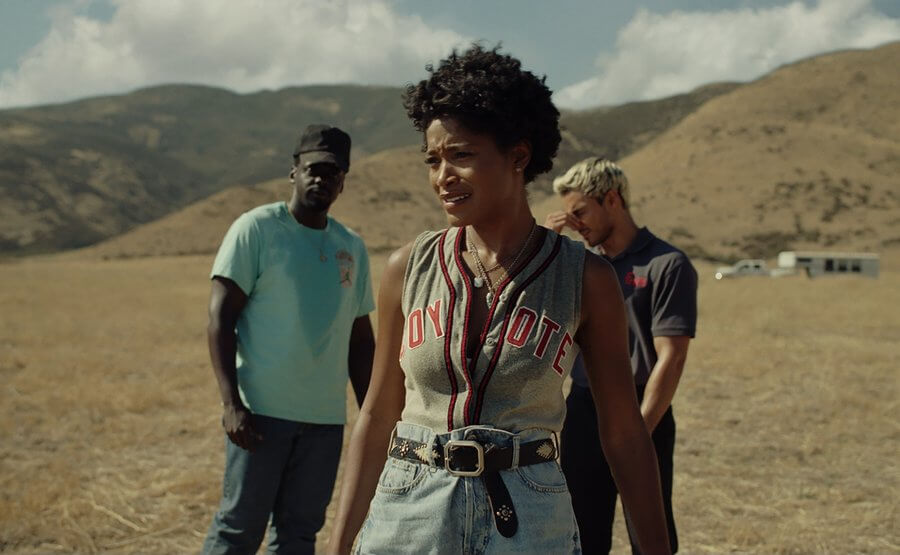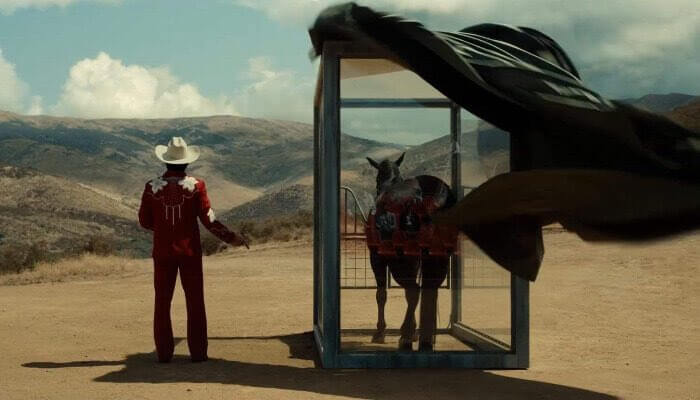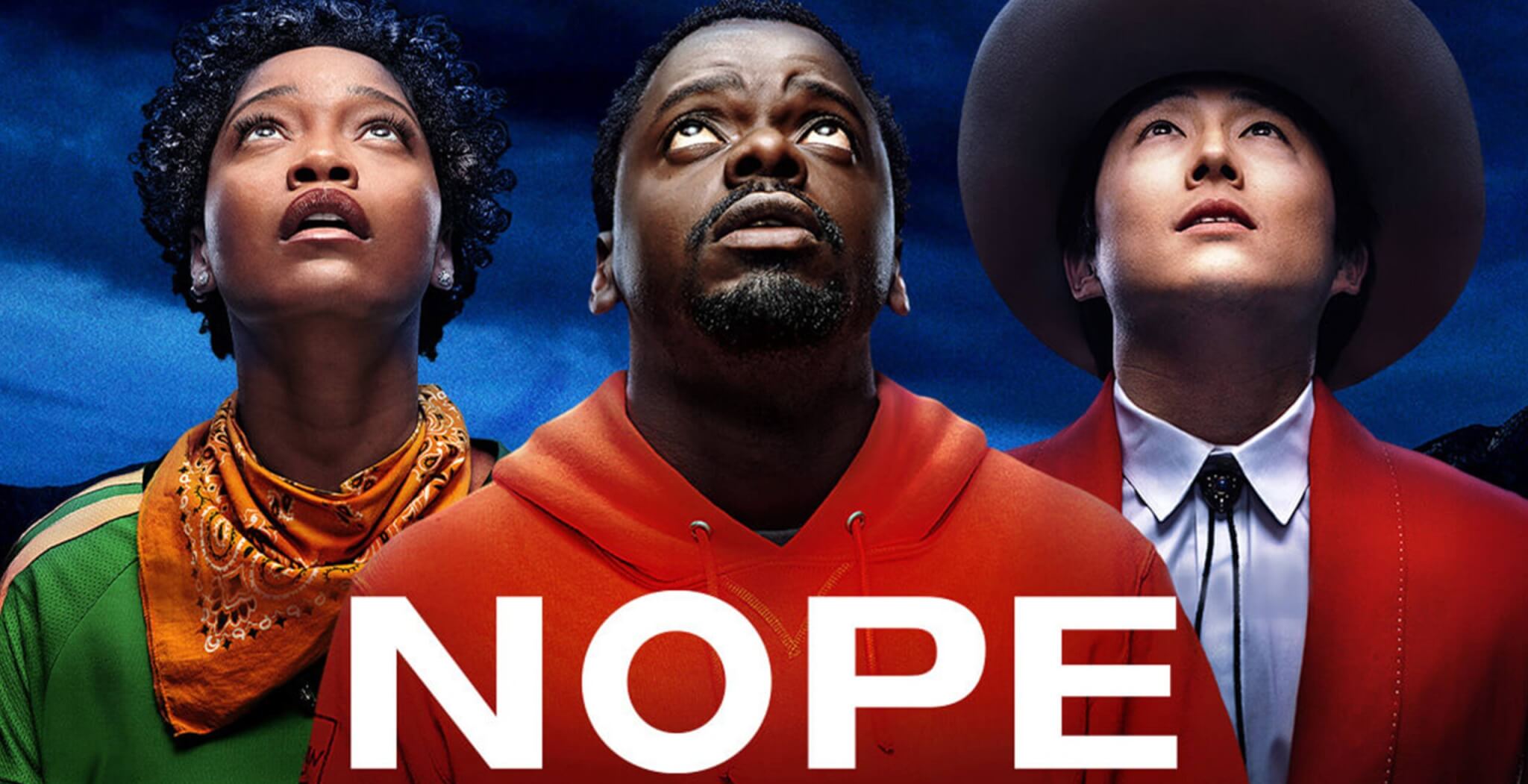Jordan Peele’s Nope is a Movie for the Sake of Spectacle
When discussing his mindset while directing his third feature film, “Nope,” Jordan Peele expressed some concerns about the future of cinema. He emphasized his desire to create a captivating experience, one that would compel audiences to come and see his work.
Since his debut film, “Get Out,” in 2017, Peele has successfully attracted audiences to his projects. In “Get Out,” he masterfully blended the horrifying subject of racism with a unique and unsettling cinematic approach. Peele cited influential movies like “Rosemary’s Baby,” “Night of the Living Dead,” “Funny Games,” “Candyman,” and “The ‘Burbs” while curating “The Art of the Social Thriller,” a film series presented by the Brooklyn Academy of Music in 2017. Similarly, “Get Out” has become a modern classic, owing its success not only to Peele’s visionary direction but also to the impeccable casting choices, including Daniel Kaluuya, Allison Williams, Lakeith Stanfield, and Lil Rel Howery.
Peele’s next film, “Us,” released in 2019 and starring Lupita Nyong’o and Winston Duke, achieved box office success. However, it also left some critics pondering whether the director had overwhelmed himself by tackling themes of race, class, and privilege without fully crafting a cohesive plot. Online forums such as IMDB and Rotten Tomatoes were rife with disappointed comments comparing Peele to M. Night Shyamalan, the American director known for his acclaimed film “The Sixth Sense” in 1999 but struggled to replicate its success since then.
In an effort to dispel these apprehensions, fans and critics eagerly awaited Peele’s latest and most enigmatic creation. The trailer for “Nope” was strategically released during the Super Bowl, the most significant sports event in the United States, ensuring maximum exposure to a vast audience.
In “Nope,” Peele diverges from societal and supernatural threats to explore a menace from above—an unidentified flying object (UFO). Once again, Peele collaborates with Daniel Kaluuya, who gained fame with his role in “Get Out,” as well as actress and singer Keke Palmer and Steven Yeun from “The Walking Dead.” The story begins in 1998 on the set of a TV sitcom called “Gordy’s Home,” where a chimpanzee named Gordy attacks one of his co-stars. Child actor Ricky takes shelter under a table and is saved by security guards who enter the studio.
This time, Peele – who also acted as host for the re-boot of classic sci-fi anthology series The Twilight Zone – gives us UFOs and a threat not coming from within society (Get Out) or from beyond (Us), but from above.
He once again cast Daniel Kalluya, who after starring in Get Out became a Marvel actor appearing in 2018’s Black Panther, actress and singer Keke Palmer and Steven Yeun (The Walking Dead) in the leading roles.

Fast forward to present-day Agua Dulce, California, where Otis “OJ” Haywood, Jr. and his sister Emerald strive to maintain their family’s Hollywood ranch. OJ recently inherited the farm after his father’s tragic death, caused by a coin falling from the sky. Despite their financial struggles, the Haywoods notice an eerie, motionless cloud hovering over their land and make it their mission to capture whatever or whoever lurks behind it on video. The potential monetary gain from providing evidence of extraterrestrial life seems to offer a solution to their financial woes. However, Jupe, still haunted by the traumatic incident at Gordy’s Home, envisions turning the encounter with the unknown into a grand spectacle.
Peele draws inspiration from films such as “Close Encounters of the Third Kind,” which ignited an UFO-craze in the 1980s and directed by Steven Spielberg. The vastness of space and the limitless horrors that might reside within it provide a refreshing departure from the proliferation of rebooted serial killers dominating the horror genre. However, just as Jupe eagerly seeks to exploit the otherworldly visit for profit, one may question whether Peele inadvertently follows the same path.

“Nope” delivers 130 minutes of entertainment with an exceptional cast, undoubtedly. However, unlike the innovative and thought-provoking nature of “Get Out,” “Nope” amounts to nothing more (and strangely nothing less) than a spectacle. While it immerses viewers in the thrill of UFO hunting, it fails to leave a lasting impact beyond a heightened sense of suspicion towards clouds.
Peele’s creative choices were also influenced by films like “King Kong,” “Jurassic Park,” “The Wizard of Oz,” and “Signs,” all of which explore the exhilaration and dangers inherent in staging grand spectacles—a “show of a lifetime.” It is hoped that Peele will prioritize other aspects in his future endeavors.
“Nope” is currently showing in cinemas.



























